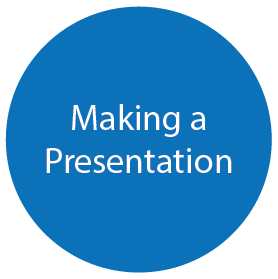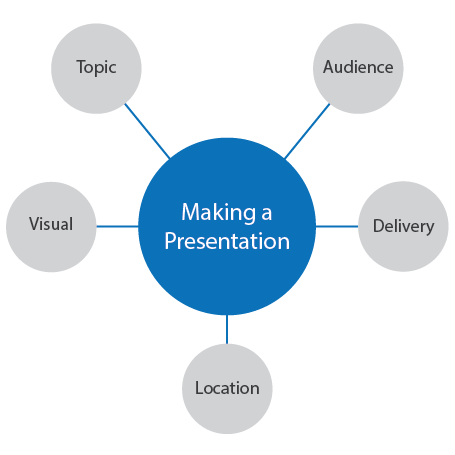Mind Maps®
A Powerful Approach to Note-Taking
(Also known as Mind Mapping, Concept Mapping, Spray Diagrams, and Spider Diagrams)
Have you ever studied a subject or brainstormed an idea, only to find yourself with pages of information, but no clear view of how it fits together?
This is where Mind Mapping can help.
Mind Mapping is a useful technique that supports learning, improves information recording, shows how different facts and ideas are related, and enhances creative problem solving. Read on to find out more.
Click here to view a transcript of this video.
What Are Mind Maps?
Mind Maps were popularized by author and consultant, Tony Buzan. They use a two-dimensional structure, instead of the list format conventionally used to take notes. This makes information easier to remember, as it's held in a format that our minds find easy to recall and quick to review.
A good Mind Map shows the "shape" of the subject, the relative importance of individual points, and the ways in which facts relate to one another. Research shows that this is of particular benefit when dealing with complex information, such as during business planning and strategy development.
Mind Maps are more compact than conventional notes, and often take up just one side of paper. This helps you to make associations and to generate new ideas. You can also add new information easily, even to a Mind Map that you've already drawn.
Mind Mapping can also help you to break down large projects or topics into manageable chunks, so that you can plan effectively without getting overwhelmed and without forgetting something important.
What Can I Use Mind Maps For?
Mind Maps are useful for:
- Brainstorming – individually, and as a group.
- Summarizing information.
- Taking notes.
- Consolidating information from different sources.
- Thinking through complex problems.
- Presenting information clearly.
- Studying and memorizing information.
Mind Maps are also good for refreshing information in your mind. When you commit the shape and structure of a Mind Map to memory, you can often get the cues you need to remember the information it contains just by glancing quickly at the Map. Studies have shown that this makes them highly valuable when you're learning a language, for example.
You can really get inventive with Mind Maps, so they are great for boosting creativity, too. When you include colors, images or drawings, they can even resemble a work of art!
How to Draw a Basic Mind Map
To draw a Mind Map, follow these five steps:
Step 1. Write the title of the subject or project that you're exploring in the center of a page and draw a circle around it, as shown in figure 1, below.
(Our simple example shows a Mind Map of the actions needed to deliver a successful presentation.)
Figure 1.

Step 2. Draw lines out from this circle as you think of subheadings of the topic or important facts or tasks that relate to your subject. Label these lines with your subheadings. (See figure 2, below.)
Figure 2.

Step 3. Dive deeper into the subject to uncover the next level of information (related sub-topics, tasks or facts, for example). Then, link these to the relevant subheadings. (See figure 3, below.)
Figure 3.

Step 4. Repeat the process for the next level of facts, tasks and ideas. Draw lines out from the appropriate headings and label them, as shown in figure 4, below.
Figure 4.

Step 5. As you discover new information or think of additional tasks, add them to your Mind Map in the appropriate places.
A complete Mind Map may have main topic lines radiating in all directions from the center, with sub-topics forking off these like branches and twigs from the trunk of a tree. You don't need to worry about the structure you produce – this will evolve of its own accord.
Tip:
While drawing Mind Maps by hand is appropriate in many cases, software tools and apps like Coggle, Bubbl.us, Mindmeister, MindGenius, iMindMap, and Mindjet can improve the process by helping you to produce high-quality Mind Maps, which you can then easily edit or redraft.
How to Use Mind Maps Effectively
Once you understand how to take notes in the Mind Map format, you can develop your own conventions for taking them further. The following suggestions can help you to get the most from your Mind Maps:
-
Use Single Words or Uncomplicated Phrases – Keep things simple. In Mind Maps, single strong words and short, meaningful phrases can convey the same meaning more potently. Excess words just clutter a Mind Map.
- Print Words – They will be easier to read than joined-up or indistinct writing.
- Use Color to Separate Different Ideas – Color can help to show the organization of the subject. It can also make your Mind Map a more appealing document, and help you to visualize the different sections of your Mind Map for future recall.
- Use Symbols and Images – Pictures can help you to remember information more effectively than words, so use symbols or pictures that mean something to you, use it. (You can use photo libraries like iStock to source images inexpensively.)
- Using Cross-Linkages – Information in one part of a Mind Map may relate to another part, so draw lines to show these cross-linkages. This will help you to see how one part of the subject affects another.
Visual Example
Click on the thumbnail below for a great example of a Mind Map with high visual impact:
Key Points
Mind Mapping is a powerful note-taking method. Mind Maps not only highlight important facts, but also show the overall structure of a subject and the relative importance of individual parts of it.
They are great when you need to think creatively, and can help you to make new connections between ideas. This is useful when you have problems to solve.
To use Mind Maps effectively, it's best to print your words, to use different colors (to add visual impact), and to incorporate symbols and images to spur creative thinking.
If you do any form of research or note taking, try experimenting with Mind Maps. You'll love using them!
This site teaches you the skills you need for a happy and successful career; and this is just one of many tools and resources that you'll find here at Mind Tools. Subscribe to our free newsletter, or join the Mind Tools Club and really supercharge your career!







Welcome to the Mind Tools Club and great that you are using this tool for your meetings. Mind Mapping is a great approach to getting ideas recorded along themes!
Midgie
Mind Tools Team
This is a very helpful tool. I have started using this tool for almost all the meetings.
Thank you.
Great to hear that we were able to provide a useful tool for you to manage the information you're receiving.
Thank you for the positive feedback.
BillT
Mind Tools Team